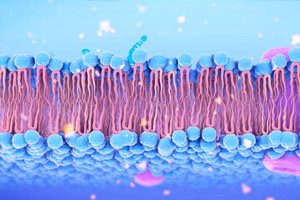
All iLive content is medically reviewed or fact checked to ensure as much factual accuracy as possible.
We have strict sourcing guidelines and only link to reputable media sites, academic research institutions and, whenever possible, medically peer reviewed studies. Note that the numbers in parentheses ([1], [2], etc.) are clickable links to these studies.
If you feel that any of our content is inaccurate, out-of-date, or otherwise questionable, please select it and press Ctrl + Enter.
Membrane cholesterol: a new target in colorectal cancer
Last reviewed: 09.08.2025
 ">
">Colorectal cancer (CRC) is often associated with mutations in the APC suppressor gene, leading to uncontrolled activation of Wnt signaling and tumor growth. In a new review in Trends in Pharmacological Sciences, Cho et al detail how APC defects result in free cholesterol accumulation on the cell membrane, which, by altering the physicochemical properties of the lipid bilayer, enhances Wnt signaling via the key mediator Dishevelled (Dvl) and the transcriptor β-catenin.
What happens at the membrane level?
Regulation of cholesterol by APC
Normal APC is involved in the endocytosis and utilization of membrane cholesterol, maintaining its optimal level.
When APC mutates, this control is disrupted and excess free cholesterol clumps in areas of the membrane.
Membrane sealing and Dvl localization
The increased proportion of cholesterol makes the membrane more rigid and promotes clustering of microdomains where Wnt receptor binding sites are located.
Dvl, a central adaptor in the Wnt pathway, tightly associates with these domains, which enhances its signaling to β-catenin.
Activated transduction
Long-term activation of Dvl increases cytosolic β-catenin levels, its translocation to the nucleus, and the initiation of proliferative transcription, which stimulates the growth and survival of cancer cells.
Experimental evidence and therapeutic strategies
- Organoids and cell lines: When treated with specific cholesterol-vending ligands or membrane stabilizers, we observed a decrease in Dvl clustering, a drop in β-catenin activity, and inhibition of CRC organoid growth.
- Mouse models: Systemic or local administration of drugs that displace cholesterol from membrane microdomains resulted in 40–60% slowing of tumor progression without significant toxicity to normal tissues.
Benefits of the new approach
Rather than targeting β-catenin directly
, the popular but difficult to reach intracellular oncoproteins are replaced by membrane cholesterol, a more easily accessible target.High selectivity
- due to local delivery (hydrogels, liposomes), it is possible to limit the effect of drugs in the tumor area, avoiding systemic effects.Repositioning
- Many statin-like and membrane-stabilizing compounds are already approved for other indications and can be rapidly tested in the CRC clinic.
Authors' Quotes
“The loss of APC is not only a molecular childhood mistake of the Wnt pathway, but also a membrane phenomenon: excess free cholesterol sets the rigidity of the lipid bilayer and enhances local activation of Dvl,” explains A. Erazo-Oliveras, senior author of the review.
“Targeting membrane cholesterol opens a new avenue for precision therapy of CRC: it is much easier to interfere with the membrane composition than to look for the β-catenin core,” adds V. Cho.
Next steps
- Clinical trials: phase I/II for cholesterol modulators in combination with chemotherapy and immunotherapy.
- Individualization of treatment: stratification of patients by APC mutation and membrane cholesterol status for maximum benefit.
- Safety monitoring: studying the effects of long-term cholesterol modulation on the functions of other tissues.
This discovery not only explains a new mechanistic aspect of Wnt activation in colorectal cancer, but also paves the way for “membrane therapy” where cholesterol becomes the Achilles' heel of the tumor.
